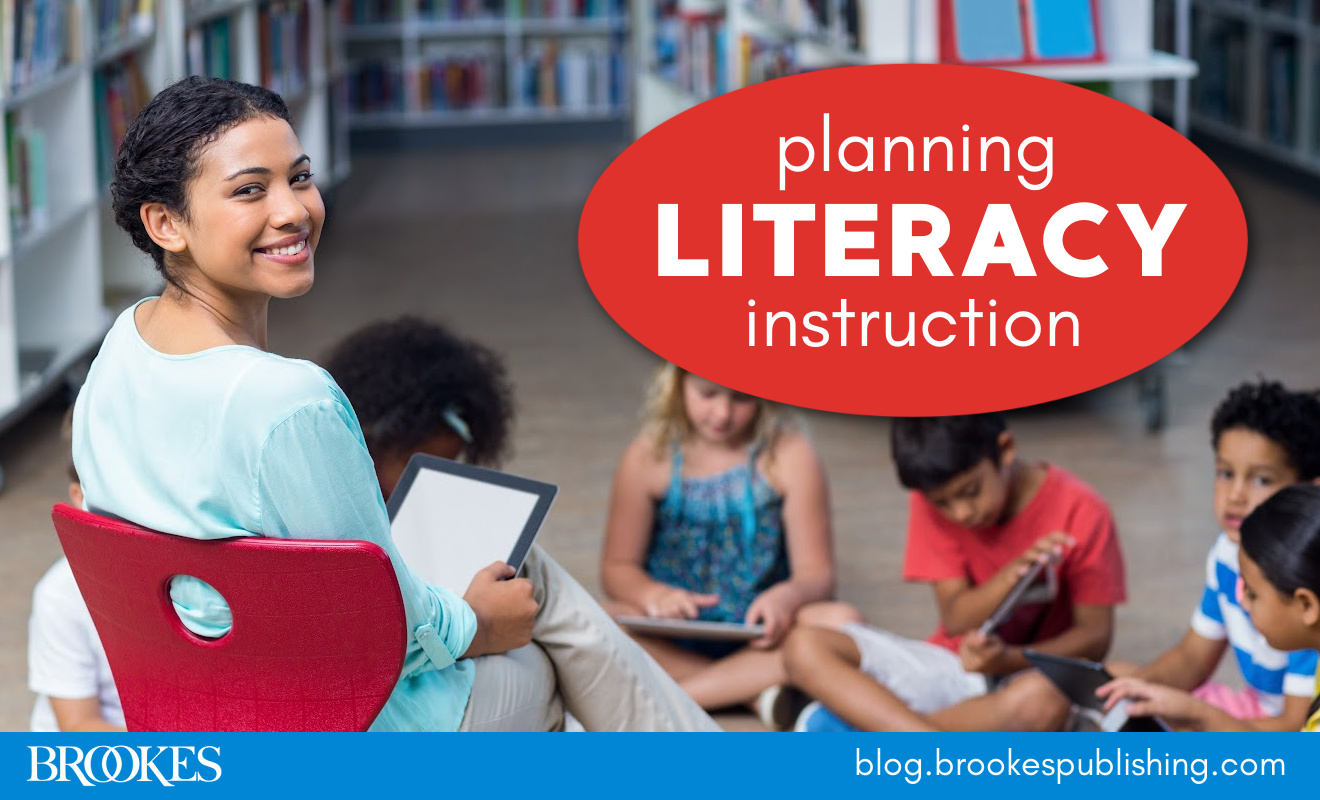7 Questions to Ask When Planning Standards-Based Literacy Instruction
March 7, 2024
 *Today’s post has been adapted from the chapter “Using Standards to Guide Instruction” by Karin K. Hess, in Fundamentals of Literacy Instruction & Assessment, Pre-K–6, Second Edition, edited by Martha C. Hougen & Susan M. Smartt, with invited contributors
*Today’s post has been adapted from the chapter “Using Standards to Guide Instruction” by Karin K. Hess, in Fundamentals of Literacy Instruction & Assessment, Pre-K–6, Second Edition, edited by Martha C. Hougen & Susan M. Smartt, with invited contributors
Today in education, it’s not possible to talk about instruction, curriculum, or assessment without talking about standards. The goal of the standards-based education movement has been to enhance learning outcomes so that each student will be prepared for college, postsecondary training, or a career. This sometimes means that teachers will customize instruction to address what different students need to achieve those learning goals, rather than expecting all students to learn at the same rate or in exactly the same ways. The goal of standards-based education has not been to reduce the rigor of expectations but to increase rigor for all students—with more complex texts and more challenging tasks—and to develop a range of instructional strategies in support of deeper learning.
Standards-based instruction requires careful planning. Before you decide which text(s) to use in a specific lesson or which strategies students should learn and practice when completing an assignment, take a step back to consider the bigger picture. How will this lesson, or this multiweek unit of study, provide students with opportunities to learn and build a deeper understanding of literacy skills and concepts over time?
Consider these seven essential questions when beginning your unit planning:
1. Which key literacy standards will be (or are) prioritized for this unit of study? Emphasizing key standards for instruction requires a clear purpose for the learning for each day’s lesson. Is the purpose for students to acquire a foundation for future learning, to develop conceptual understanding, to deepen understanding with more complex analysis and products, or to extend and broaden understanding?
2. Are there other supporting standards (skills and concepts) that can be reinforced in this unit of study but not formally assessed? Supporting standards can range from skills and concepts already taught and assessed or new skills just being introduced. Sometimes, supporting standards have not been identified in district curriculum documents. This gives you the opportunity to reinforce a few additional skills in each lesson.
3. What content will be taught and how will students demonstrate and apply their understanding? Unpack the unit’s priority standards to determine possible instructional activities for the series of lessons in the unit of study. Even when you’re using an established program of studies, this strategic unpacking of standards will provide new insights into what is to be taught and why. You might also uncover some additional opportunities to reinforce and scaffold the learning.
4. What are the broader learning goals for the unit and smaller learning targets for each lesson, and how will they be assessed? Review (or establish) clear standards-based expectations for both content knowledge and performance at different depth of knowledge (DOK) levels. Learning targets for each lesson are sometimes shared with students as success criteria and stated in student-friendly language: I can sequence key events described in a text; I can locate text evidence that supports my interpretation or claims about the author’s message. Think about the evidence of learning you will collect from the unit assignments and assessments. Will the evidence of learning match what is intended in the prioritized standards? For example, an assessment that asks students to edit a piece of writing would not align well with a standard that requires students to compose a piece of writing.
5. What is a logical ordering of learning activities? Consider the learning pathway most students will take. How will earlier learning be connected to later learning within and across units of study? Will students deepen their understanding over time with increasingly complex tasks? Using DOK levels to describe performance assessment tasks is one way to estimate how and if students are being asked to deepen their understanding. Learning progressions, which are research-based descriptions of how students typically develop and demonstrate deeper, broader, and more sophisticated understanding over time, can also inform how to design instruction and formative assessments for a series of lessons. (See Fundamentals of Literacy Instruction & Assessment, Pre-K–6 for more on learning progressions.)




Write a Comment
Your email address will not be published. Required fields are marked *
Post a Comment